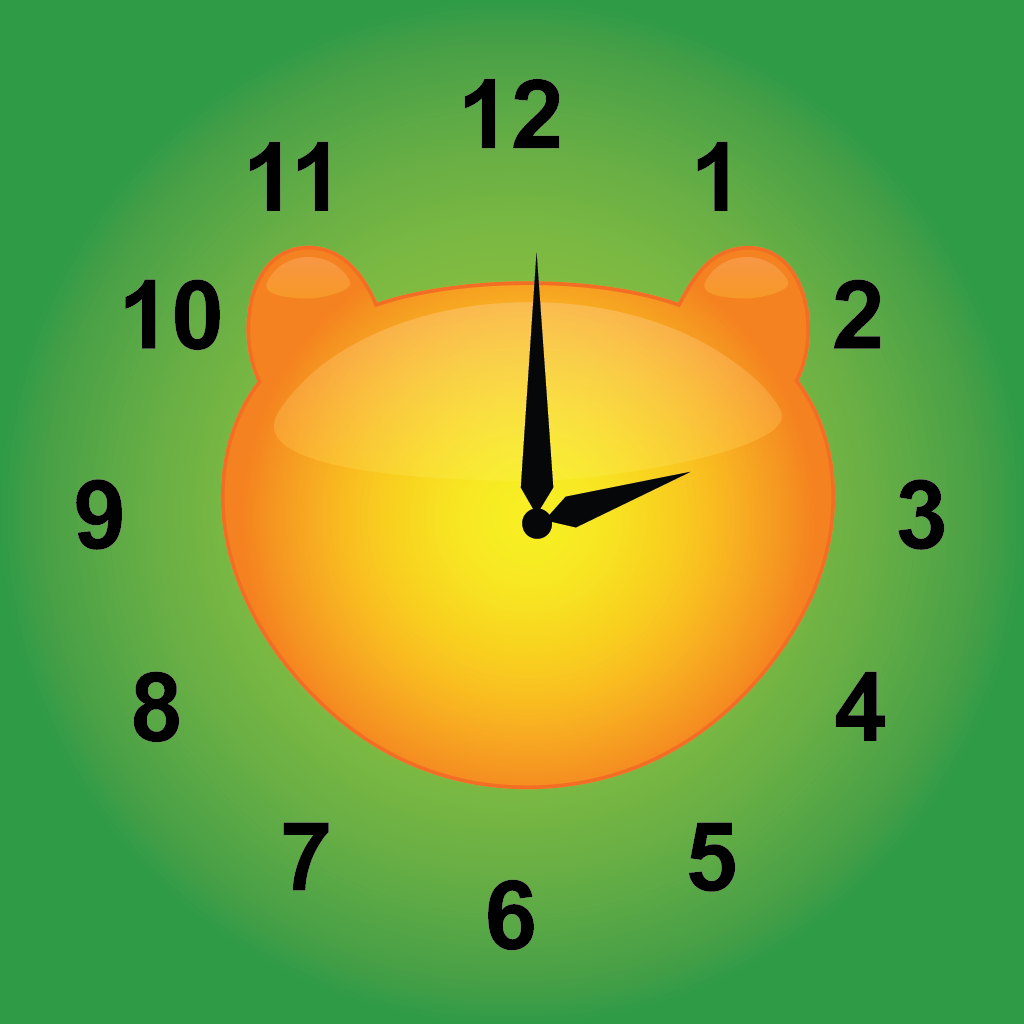Interactive Telling Time Review
Interactive Telling Time is an excellent universal app that will help children practice their time-telling abilities.
In writing reviews for GiggleApps, I have had the chance to check out a few educational apps that teach one how to tell time. I am happy to introduce this app to readers as another stand-out within this category as an app that will certainly help kids learn and study this concept.
Five interactive sections are included as well as a section dedicated to the explanation of telling time, each thoughtfully allowing children to practice their clock-reading skills.
Set the Time in an activity which allows children to move the hands of a large clock to correspond with a digitally displayed time. I appreciate how clearly the hours and minutes of the main teaching clock used here are shown with bolder, red numbers marking every five minutes as well. Both the minute and hour hands can be moved on their own with the correct corresponding clockwise movements of the hour hand as the minute hand moves, with an option for the hour hand to be fixed, only allowing the minute hand to turn as well.
Another wonderful element of this section is the window used, as night and day can be seen transitioning slowly or quickly as the minute or hour hands turn.
Narration is also included, saying the time after each change is made with the movement of either hand of this clock. This narration makes it easy for those new to time telling to use these cues to set the clock at the correct time, with a Solve button to press to tap when a final answer is entered.
What Time Is It? features the same elements found in Set the Time, but here, the time on the clock and window images are set, asking children to scroll through the hour and minutes found on a digital display to create a time that matches the analogue clock much like the way one sets an alarm on the iPhone.
Here, narration is provided only at the end when the time has been correctly entered, including the time as well as praise for a job well done.
Play Puzzle! consists of nine clock faces that each becomes a puzzle when tapped. These clocks include many cute novelty choices including flowers, train or moon themes as well as a lion and fish.
It is especially nice that the pieces included that children must add to these clocks puzzles vary. Sometimes the clock contains 12 numbers classically seen, but options include clocks that just mark the 12, 3, 6, and 9, as well as a gears clock with no numbers at all, including only the hands and center piece as parts to put back into the clock.
Roman numerals are also touched upon here in a fun clock of The Seven Wonders, giving kids a nice overview of the kinds of clocks they may encounter in real life.
Take the Quiz tests children on what they have learned as a specific time needs to be matched to one of four clocks, and there is also a Stop Watch section that asks children to stop the clock with a tap when the time matches a specific time given. Five speeds are offered, making this section as difficult or easy as the child who is playing needs to be challenged.
A Learn the Clock section is also included, consisting of written instructions that adults need to read to children about how to tell time, nicely broken up into seven short pages of information.
Although well-written and including some nice interactive elements as well, it would be an added benefit if narration were included so that non-readers could explore this section on their own.
I did notice that within this app, the terms “quarter past,” “half past” and “quarter to” are focused on, as here, one would say “quarter to four” for 3:45 - different from my way of speaking, which would read this as “three forty-five” for both analogue and digital clocks alike.
As this was developed by an Australian company, I am unsure if this is a cultural difference, a choice of style thought of as an easier way to teach children how to tell time, or if I am the one who has been wrong all these years. Although an issue for me, this may not be of concern for children new to learning to tell time in general.
One of the best parts of this app is that each of the different clocks found in the puzzle section can be chosen as the clock found within these interactive sections, letting children practice their new-found clock reading skills on a variety of clock faces - excellent for children who have interests in a specific subject like trains or space, but which also serves to give children the chance to learn telling time on clocks that don’t always have the numbers showing.
I personally don’t like clocks without all the numbers, but the ability to be comfortable looking at a clock like this with confidence is a great skill to teach children.
Parents please note that there is a nice selection of choices one has at their disposal to create a personalized experience. Multiple languages are included as is the chance to learn military time by choosing the 24 hour clock mode of this app.
AM and PM can also be focused on, as children may also need to turn the hands of the clock fully around to change the time of day or night as seen out the window, a nice inclusion not see in other apps like this.
There are also five levels of difficulty ranging from just learning about one hour intervals, to increasing the difficulty to 30, and ultimately to one minute intervals as well. Statistics involving the right and wrong answers made while using this app are also made available to parents.
One of the first things I noticed when looking at this app is how bright and cheerful everything found within this app is - from the clocks themselves to the striped wallpaper hung on the wall behind the clock in question, added to simply brighten up the background.
Two song selections are also available, both very easy to listen to for long periods of time, especially the jazzy second choice that I really enjoy. Turning off the music completely is also an option.
My only note is that the aquarium found on the title page along with the settings and clock-change feature and used as an incentive to continue with the use of this app can easily be overlooked as there is no link to this area from the page of interactive sections that children will be spending the majority of their time on.
Having made this minor point, I think that this is another excellent app for learning how to tell time.
It it is also worth noting that this developer, GiggleUp, has also created a few nice puzzle apps available through iTunes, two of which have also been reviewed at GiggleApps. Please search for these reviews if interested.








